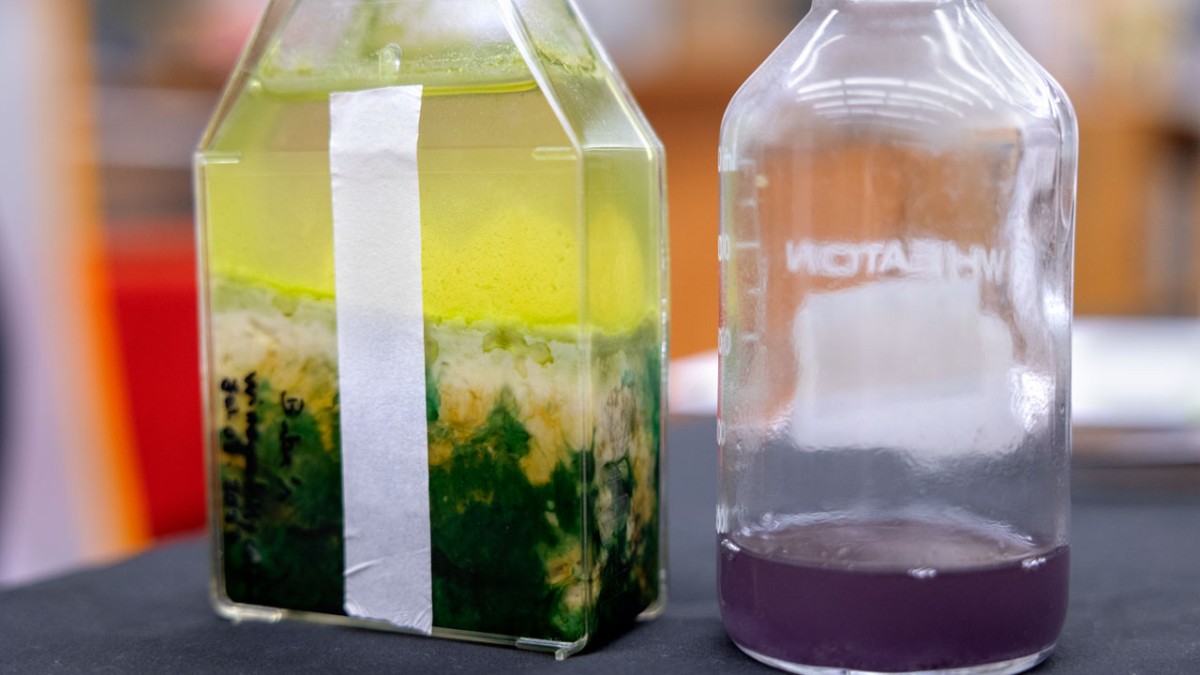The best chance to find life on another planet is not to seek out a pale blue dot, nor worlds of forest green, a new paper argues. Instead, we need to be looking out for purple planets, the argument goes, because that is the shade life is likely to show for the longest time.
If asked to think of a planet supporting life, most people will probably imagine a world like our own, with oceans, forests, and grasslands. However, even though life has been present on Earth for most of the time since it formed, the jungles and savannahs are new. For around three-quarters of Earth’s history, life existed in the form of single-celled organisms. If biology exists on planets in our patch of the galaxy, the odds are it’s in this form.
With rare exceptions, the chlorophyll in plants gives their leaves the familiar green color. Many phytoplankton have a similar shade. However, in environments that are low on oxygen, the dominant lifeforms can be purple bacteria, and according to Cornell University’s Dr Lígia Fonseca Coelho, this is the most likely environment on an alien planet.
“Purple bacteria can thrive under a wide range of conditions, making it one of the primary contenders for life that could dominate a variety of worlds,” Coelho said in a statement.
Bacterial samples from Cornell’s Space Sciences Building include some that are a familiar green, but others that are purple, which may be more common for planets around red dwarfs.
Image Credit: Ryan Young/Cornell University
It will be a long time before we can see planets beyond our Solar System clearly enough to make out a purple disk. Considerably sooner, however, we may be able to detect what Coelho calls a “light fingerprint” in the spectrum we detect, showing the planet is brightest at certain wavelengths.
“We need to create a database for signs of life to make sure our telescopes don’t miss life if it happens not to look exactly like what we encounter around us every day,” Professor Lisa Kaltenegger added.
Purple bacteria can survive and thrive under such a variety of conditions that it is easy to imagine that on many different worlds, purple may just be the new green.
Professor Lisa Kaltenegger
To identify the dominant colors in a low-oxygen world, such as existed for most of Earth’s history, Coelho and colleagues went hunting for organisms where such conditions persist. This includes deep-sea hydrothermal vents, marshes, and even a stagnant pond handily located on the Cornell campus.
“They already thrive here in certain niches,” Coelho said. “Just imagine if they were not competing with green plants, algae and bacteria: A red sun could give them the most favorable conditions for photosynthesis.” That’s important, because so many of the nearby Earth-like planets we have found orbit red dwarfs.
The dominant life forms they found are known as “purple bacteria”, but actually come in a variety of colors, including fetching shades like yellow and red. The two main classes (purple sulfur bacteria and purple non-sulfur bacteria) both favor longer wavelength light than most plants, much of it beyond the spectrum we can see.
Such diversity appears to offer little chance to distinguish planets with life from those without. However, after modeling the likely mix under different conditions, the authors found the bacteria’s name is not a misnomer. Although brown is common, enough of the bacteria are genuinely purple that this would be the color to look out for – one seldom found in lifeless rocks.
It’s a lot easier to get excited about intelligent aliens, or even forest worlds filled with strange animals, than organisms that require a microscope to see individually. However, Kaltenegger, who literally wrote the book on the current state of astrobiology, argues finding worlds like this is crucial.
Detecting purple planets in the near future will still be difficult, and if we find even one it will almost certainly mean that life is common. If so, the nearest world with more advanced organisms may be too distant to spot just yet, but we can be confident it is there to find.
“We are just opening our eyes to these fascinating worlds around us,” Kaltenegger said. “Purple bacteria can survive and thrive under such a variety of conditions that it is easy to imagine that on many different worlds, purple may just be the new green.”
The study is published in Monthly Notices of the Royal Astronomical Society.
Source Link: Forget Little Green Men – Alien Life Is Probably Mostly Purple
